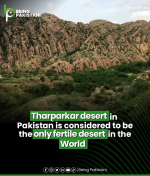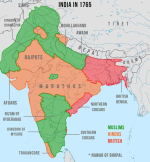On
“Pakistan Day”, it is important to remember that Mr Muhammad Ali Jinnah was "visionary" not just because he recognized the threat from Hindu Mahasabha and the RSS but also from the Machiavellian perfidy of a Hindu body called ‘Congress’ which was going to inherit the political power from Raj.
The 1914 Congress had a total of 856 delegates, in 1915 there were 2190 and in 1916 there were 2249. Of these, the number of Muslims were less than 1% in 1914, 2% in 1915 and 3% in 1916. In 1937, 97%, membership of Congress was Hindu.
Dr Ambedkar, who made the Indian constitution, said:
“It is foolish to take solace in the fact that because the Congress is fighting for the freedom of India, it is, therefore, fighting for the freedom of the people of India and of the lowest of the low. The question whether Congress is fighting for freedom has very little importance as compared to the question for whose freedom is the Congress fighting?”
Mr Jinnah was hailed as an ambassador of Hindu Muslim unity by people as big as Gokhale and Sarojini Naidu. He wanted Muslims to be treated as equals instead of minority but the events of 1937-39 changed him forever.
Jawaharlal Nehru’s first real test as a political leader came with the Provincial elections of 1936-37. Nehru campaigned tirelessly and covered 80,000 kms in about 5 months. Eventually Congress was elected on 761 out of 1161 seats it contested. Out of 485 Muslims seats, it contested only 58 and won 26. At this time, the membership of Congress was 97% Hindu. Across British India, it could not even find candidates in 90% of Muslim constituencies.
In Nehru's own province, Uttar Pradesh, the most populous in India, Congress swept the board of Hindu seats but it had not won a single Muslim seat.
Crowning over the results, Nehru announced in hubris that there were now only two political powers that mattered in India: Congress and the British govt. Eventually, Congress formed ministries in Madras, Bombay, Orissa, Bihar, United Provinces and Central Provinces to begin with. Later on, it formed ministries in NWFP and Assam.
By 1938, eight out of eleven provinces were under Congress rule and party membership soared from 470,000 in 1935 to 4.5 million with 97% Hindus.
Those 28 months of Congress rule were a nightmare for Muslims. There were 57 serious communal riots in which 1700 casualties were reported in Congress ruled provinces. Along with this:
1. Congress adopted ‘Vande Mataram’ (anti Muslim song from a Hindu novel) as national anthem.
2. Hindi in Devanagari script became official language.
3. Congress tri colour flag became national flag.
4. Steps for creation of a Congress Army were taken.
5. Mandar Scheme aimed at promoting Hindu culture by making Mandar education necessary at elementary level was introduced.
6. Warda Taleemi Scheme was enforced to displace idea of Two Nation Theory from minds of Muslim children at schools.
7. Cow slaughtering was banned.
8. Construction of new mosques was banned.
9. Muslims were denied govt offices and expelled in many cases.
R. Coupland, who has made a detailed study of the period, is of the opinion that Congress totalitarianism was exhibited to overawe the minorities. “For to set a party above the people, to identity its organisation with the State, is to override the minority problem”.
Churchill said that during this short period, Congress had resorted to police firing on civilians so much that it killed more people in comparison to 200 years of British rule. It was a severe indictment but well deserved.
These events had confirmed the worst fears of Muslims.
Jinnah said in Oct 1937:
“On the very threshold of what little power and responsibility is given, the majority community has clearly shown their hand: that Hindustan is for the Hindus”.
With the fall of Congress govt in 1939, Muslim League announced it as Day of Deliverance.
Subsequently, on 23rd March 1940, Lahore resolution for an independent state was adopted by Muslim League.













